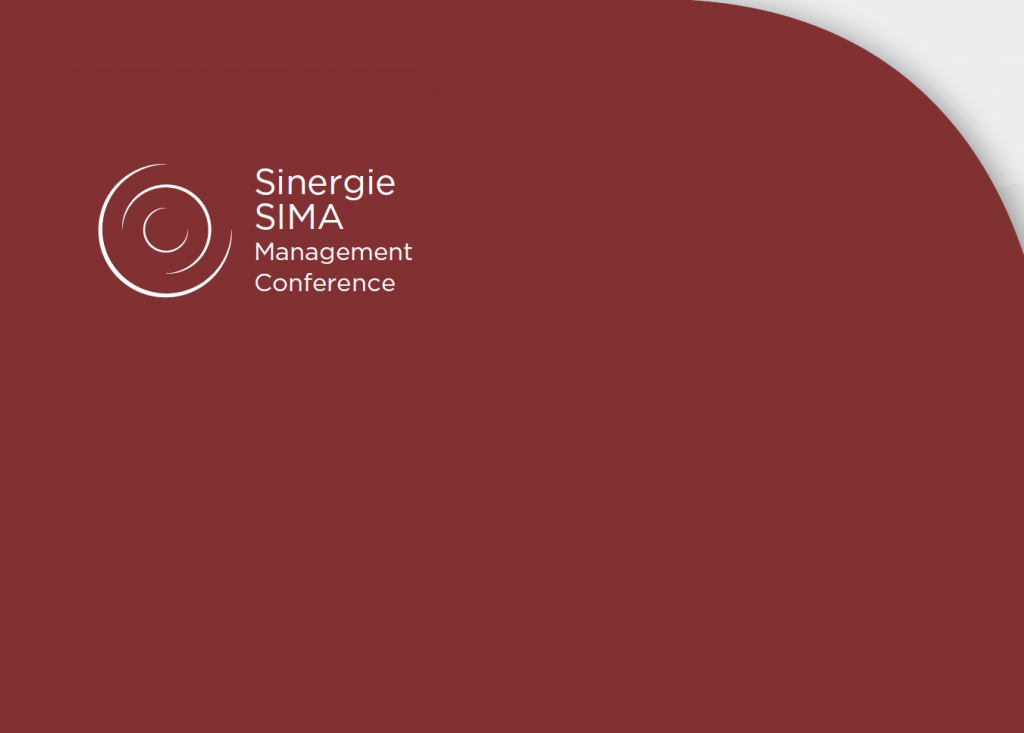Overdesign e sviluppo del nuovo prodotto: un'indagine sul ruolo dei bias cognitivi nei processi decisionali dei progettisti
Obiettivo del paper: Larticolo affronta il tema delloverdesign, ovvero della tendenza dei progettisti a sviluppare prodotti/servizi superiori rispetto alle effettive esigenze dei clienti. In particolare, lobiettivo verificare se e in che misura i bias cognitivi determinino questo fenomeno e quale ruolo svolgano i sistemi di pricing del prodotto e di misura delle prestazioni dei Progettisti rispetto ai meccanismi distorsivi delle decisioni.
Metodologia: stata condotta una survey che ha consentito di raccogliere 149 questionari utili, fra i progettisti di aziende operanti in settori design-based.
Risultati: I dati raccolti, sottoposti ad unanalisi fattoriale, hanno evidenziato lesistenza di 3 forme di overdesign e di 6 categorie di bias cognitivi. Attraverso unanalisi di regressione, si verificato che i bias dei progettisti costituiscono driver significativi delle tre forme di overdesign. Limpatto dei sistemi di pricing e di misura delle prestazioni sembra invece essere piuttosto limitato.
Limiti della ricerca: Questo lavoro presenta i limiti peculiari degli studi basati su survey. In particolare, al fine di verificare la validitdelle evidenze emerse, occorrerebbe ampliare il campione oggetto di analisi e, soprattutto, replicare lo studio in contesti settoriali diversi rispetto a quelli osservati.
Implicazioni pratiche: Questo studio evidenzia il ruolo dei bias cognitivi nellinfluenzare loverdesign e sottolinea la necessitdi comprendere come operare un debias dei processi decisionali. A questo proposito, il presente lavoro ha verificato lefficacia solo di un ristretto numero di soluzioni che precedenti studi ipotizzano essere utili in questi contesti. Risulta, perci necessario approfondire lo studio degli strumenti utili a mitigare i bias cognitivi e le relative conseguenze sulloverdesign.
Originalità del paper: Questo studio ha approfondito un aspetto dei processi di innovazione, ovvero loverdesign, utilizzando la prospettiva comportamentale, che costituisce un filone recente negli studi sullo sviluppo del nuovo prodotto.
Riferimenti bibliografici
ABERNATHY F.H., DUNLOP J.T., HAMMOND J.H. (1999), A stitch in time: Lean retailing and the transformation of manufacturing-lessons from the apparel and textile industries, Oxford University Press, New York.
ASTEBRO T., JEFFREY S.A., ADOMDZA K. (2007), Inventor Perseverance after Being Told to Quit: The Role of Cognitive Biases, Journal of behavioral decision making, vol. 20, n. 3, pp. 253-272.
BLACKBURN J.D. (1991). Time-based competition: the next battleground in American manufacturing, Business One Irwin Homewood, Illinois.
BLOCH P.H. (1995), Seeking the Ideal Form: Product design and Consumer Response, Journal of Marketing, vol. 59, n. 3, pp. 16-19.
BOURNE M., NEELY A., PLATTS K., MILLS J. (2002), The success and failure of performance measurement initiatives: Perceptions of participating managers, International Journal of Operations & Production Management, vol. 22, n. 11, pp. 1288-1310.
COMAN A., RONEN B. (2009), Icarus predicament: managing the pathologies of overspecification and overdesign, International Journal of Project Management, vol. 28, n. 3, pp. 237-244.
COSTABILE M., CARIOLA A. (2011), La misurazione delle performance dellimpresa che innova: aspetti definitori e verifiche empiriche, Sinergie, n. 64-65, pp. 89-108.
DAVILA T. (2000), An empirical study on the drivers of management control systems design in new product development, Accounting, Organizations and Society, vol. 25, n. 4-5, pp. 383-409.
DI STEFANO P.P. (2006), Tolerances analysis and cost evaluation for product life cycle, International Journal of Production Research, vol. 44, n. 10, pp.1943-1961.
DROGE C., CALANTONE R., HARMANCIOGLU N. (2008), New Product Success: Is It Really Controllable by Managers in Highly Turbulent Environments?, Journal of Product Innovation Management, vol. 25, n. 3, pp. 272-296.
FORZA C. (2002), Survey research in Operations Management: a process based perspective, International Journal of Operations and Production Management, vol. 22, n. 2, pp. 152-194.
GABRIELSEN G., KRISTENSEN T., ZAICHKOWSKY J. (2010), Whose design is it anyway?, International Journal of Market Research, vol. 52, n. 1, pp. 89-110.
GIACCONE S.C., DALLURA G.M. (2011), La risposta del mercato allinnovazione tecnologica, Sinergie, n. 67, pp. 265-286.
GILOVICH T. (1990), Differential construal and the false consensus effect, Journal of Personality and Social Psychology, vol. 59, n. 4, pp. 623-634.
GINO F., PISANO G. (2008), Toward a Theory of Behavioral Operations, Manufacturing & Service Operations Management, vol. 10, n. 4, pp. 676-691.
GRANDO A. (2002), Profili emergenti nella domanda di servizi logistici. Evidenze empiriche e traiettorie evolutive, Sinergie, n. 57, pp.3-28.
GRANDO A., VERONA G., VICARI S. (2010), Tecnologia Innovazione Operations, Egea, Milano.
HAGTVEDT H., PATRICK V. (2008), Art Infusion: The Influence of Visual Art on the Perception and Evaluation of Consumer Products, Journal of Marketing Research, vol. 45, n. 3, pp. 379-389.
HAIR J.F., BLACK W.C., BABIN B.J., ANDERSON R.E. (2006), Multivariate Data Analysis (6th ed.), Prentice Hall, Upper Saddle River, NJ.
HERTENSTEIN J.H., PLATT M.B., VERYZER R.W. (2005), The Impact of Industrial design Effectiveness on Corporate Financial Performance, Journal of Product Innovation Management, vol. 22, n. 1, pp. 3-21.
HU L., BENTLER P.M. (1999), Cutoff criteria for fit indexes in covariance structure analysis: Conventional criteria versus new alternatives, Structural Equation Modeling, vol. 6, n. 1, pp. 1-55.
JORGENSEN B., MESSNER M. (2010), Accounting and strategising: A case study from new product development, Accounting, Organizations and Society, vol. 35, n. 2, pp. 184-204.
KAHNEMAN D. (2011), Thinking, Fast and Slow, Farrar Straus Giraux, New York.
KAHNEMAN D., LOVALLO D., SIBONY O. (2011), Before You Make That Big Decision, Harvard Business Review, vol. 89, n. 6, pp. 50-60.
KAHNEMAN D., TVERSKY A. (1974), Judgment under uncertainty: heuristics and biases, Science, vol. 185, pp. 1124-1131.
KAHNEMAN D., TVERSKY A. (1979), Prospect Theory: an analysis of decisions under risk, Econometrica, vol. 47, n. 2, pp. 263-291.
KAHNEMAN D., TVERSKY A. (1981), The framing of decisions and the psychology of choice, Science, vol. 211, n. 4481, pp. 453-458.
KRISTENSEN T., GABRIELSEN G., ZAICHKOWSKY J. (2012), How valuable is a well-crafted design and name brand?: Recognition and willingness to pay, Journal of Consumer Behaviour, vol. 11, n. 1, pp. 44-55.
LOVALLO D., CLARKE C., CAMERER C. (2012), Robust analogizing and the outside view: two empirical tests of case-based decision making, Strategic Management Journal, vol. 33, n. 5, pp. 496-512.
LOVALLO D., SIBONY O. (2010), The case for behavioral strategy, McKinsey Quarterly, vol. 2, pp. 30-43.
MOENAERT R. K., ROBBEN H., ANTIOCO M., DE SCHAMPHELAERE V., ROKS E. (2010), Strategic Innovation Decisions: What You Foresee Is Not What You Get, Journal of Product Innovation Management, vol. 27, n. 6, pp. 840-855.
MUIR C. (2007), Knowing When to Quit: Do Optimism and Overconfidence Cloud Inventor Judgment?, Academy Of Management Perspectives, vol. 21, n. 4, pp. 78-80.
NEELY A. (2005), The evolution of performance measurement research: Developments in the last decade and a research agenda for the next, International Journal of Operations & Production Management, vol. 25 n. 12, pp. 1264-1277.
NIXON, B. (1998), Research and development performance measurement: a case study. Management Accounting Research, vol.9, n. 3, pp. 329-355.
NOBLE C.H., KUMAR M. (2010), Exploring the Appeal of Product design: A Grounded, Value-Based Model of Key design Elements and Relationships, Journal of Product Innovation Management, vol. 27, n. 5, pp. 640-657.
NUNNALLY J.C. (1978), Psychometric theory (2nd ed.), McGraw-Hill, New York.
PATRICK V., HAGTVEDT H. (2011), Aesthetic Incongruity Resolution, Journal of Marketing Research, vol. 48, n. 2, pp. 393-402.
PERKS H., COOPER R., JONES C. (2005), Characterizing the Role of design in New Product Development: An Empirically Derived Taxonomy, Journal of Product Innovation Management, vol. 22, n. 2, pp. 111-127.
RAMDAS K., FISHER M., ULRICH K. (2003), Managing Variety for Assembled Products: Modeling Component Systems Sharing, Manufacturing & Service Operations Management, vol. 5, n. 2, pp. 142.
RANDALL T., ULRICH K. (2001), Product Variety, Supply Chain Structure, and Firm Performance: Analysis of the U.S. Bicycle Industry, Management Science, vol. 47, n. 12, pp. 1588-1604.
RAVASI D., LOJACONO G. (2005), Managing design and designers for strategic renewal, Long range planning, vol. 38, n. 1, pp. 51-77.
REITZIG M., SORENSON O. (2013), Biases in the selection stage of bottom-up strategy formulation, Strategic Management Journal, vol. 34, n. 7, pp. 782-799.
RONEN B., PASS S. (2008), Focused Operations Management: doing more with existing resources, John Wiley and Sons, New York.
SIMON H.A. (1957), Models of Man. John Wiley and Sons, New York.
STEVENS J. (1986), Applied Multivariate Statistics for the Social Sciences, Lawrence Erlbaum Associates, Hillsdale, NJ.
TALKE K., SALOMO S., WIERINGA J.E., LUTZ A. (2009), What about design Newness? Investigating the Relevance of a Neglected Dimension of Product Innovativeness, Journal of Product Innovation Management, vol. 26, n. 6, pp. 601-615.
TORRISI S. (2011), Innovazione tecnologica, competenze e strategie competitive delle imprese. Il caso del software, Sinergie, n. 64-65, pp. 301-329.
ULRICH K.T. (2010), Design. Creation of artifacts in society, University of Pennsylvania, Philadelphia.


